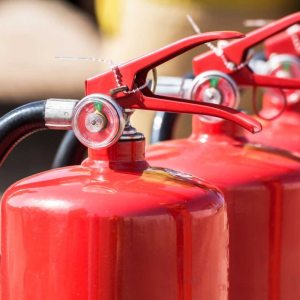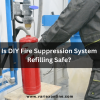![]()
Fire Immuniser
+91-7829629111
Email: info@variex.in
Varistor Technologies Pvt. Ltd.
Block-1, First Floor, Ardente Office One, Hoodi Circle, ITPL Main Road, Bengaluru, Karnataka 560048, IN
Class K Fire Extinguisher Refilling
Introduction
Class K fires are a specific type of fire that can occur in commercial kitchens and cooking areas, involving oil, grease, and fat. These fires are highly dangerous and can spread rapidly if not extinguished properly. One of the most effective ways to combat a Class K fire is by using a Class K fire extinguisher. However, after use, these extinguishers need to be refilled to ensure they are always ready for action. In this article, we will explore the importance of Class K fire extinguisher refilling and the steps involved in the process.
The Importance of Class K Fire Extinguisher Refilling
When it comes to protecting lives and property, ensuring the proper functioning of fire safety equipment is of utmost importance. Class K fire extinguishers are specifically designed to handle fires involving cooking oils and fats and are essential in commercial kitchens and cooking areas. Refilling Class K fire extinguishers is crucial for several reasons.
Firstly, refilling ensures that the extinguisher is always ready to be used in case of an emergency. Unlike other fire extinguishers, Class K extinguishers are frequently used in kitchens and may require action at any given time. By refilling these extinguishers promptly, you can rest assured that they will be functional whenever a fire incident occurs.
Secondly, refilling a Class K fire extinguisher guarantees that it contains the correct type and amount of extinguishing agent. Class K extinguishers are typically filled with a special wet chemical that effectively smothers and cools down cooking fires. Over time, this wet chemical may lose its potency or evaporate, rendering the extinguisher ineffective. Refilling ensures that the extinguisher is operational and can suppress the fire efficiently.
The Process of Class K Fire Extinguisher Refilling
Refilling a Class K fire extinguisher involves several steps to ensure a thorough and effective refill. While the specific procedures may vary slightly depending on the manufacturer's instructions and the type of extinguisher, the following general steps are typically involved:
1. Inspection: Before beginning the refilling process, it is crucial to inspect the extinguisher for any visible damage or defects. Check the pressure gauge, nozzle, and handle to ensure they are in good condition. If any damage is identified, it may be necessary to repair or replace parts before proceeding with the refill.
2. Emptying the Extinguisher: To refill a Class K fire extinguisher, it must first be emptied of any remaining agent. This can be done by discharging the extinguisher or by releasing the pressure inside. Care must be taken while emptying the extinguisher to prevent any accidental discharge that could pose a risk.
3. Disassembly: Once the extinguisher is empty, it needs to be disassembled to access the refillable components. This typically involves removing the head assembly, nozzle, and any other parts necessary for the refill process. It is essential to follow the manufacturer's guidelines to ensure proper disassembly and avoid damaging any components.
4. Refill: After disassembly, the extinguisher can be refilled with the appropriate wet chemical extinguishing agent. This process requires precision and adherence to the correct amount of agent specified by the manufacturer. It is crucial to use the right type and quantity of the extinguishing agent to ensure the extinguisher's effectiveness.
5. Reassembly: Once the refill is complete, the extinguisher must be carefully reassembled. This includes reinstalling the head assembly, nozzle, and any other parts that were removed during the disassembly process. It is important to ensure proper alignment and secure attachment of all components to guarantee the extinguisher's functionality.
6. Pressure Test and Certification: After refilling and reassembly, a Class K fire extinguisher must undergo a pressure test to verify its integrity and ensure it can withstand the required pressure. This test is usually conducted by a certified technician who ensures that the extinguisher meets all safety standards and is ready for use.
Conclusion
Refilling Class K fire extinguishers is a critical step in maintaining fire safety in commercial kitchens and cooking areas. It ensures that the extinguisher is always ready for action, containing the correct type and quantity of extinguishing agent to effectively suppress Class K fires. By following the proper steps of inspection, emptying, disassembly, refill, reassembly, and pressure testing, fire safety professionals can guarantee the functionality and reliability of Class K fire extinguishers. Regular refilling and maintenance of these crucial fire safety devices can save lives, protect property, and prevent devastating fire incidents.
Final Say
We at VariEx.in or Variexonline.com have mastered the art of designing, installing, inspecting, and fixing automatic sprinkler systems with the help of our in-house team, which is capable of delivering the fire sprinkler services you need, whether large or small and at affordable cost.
To schedule a fire sprinkler installation, or you think our services could benefit your commercial property, contact us online or give us a call at, 7829629111










